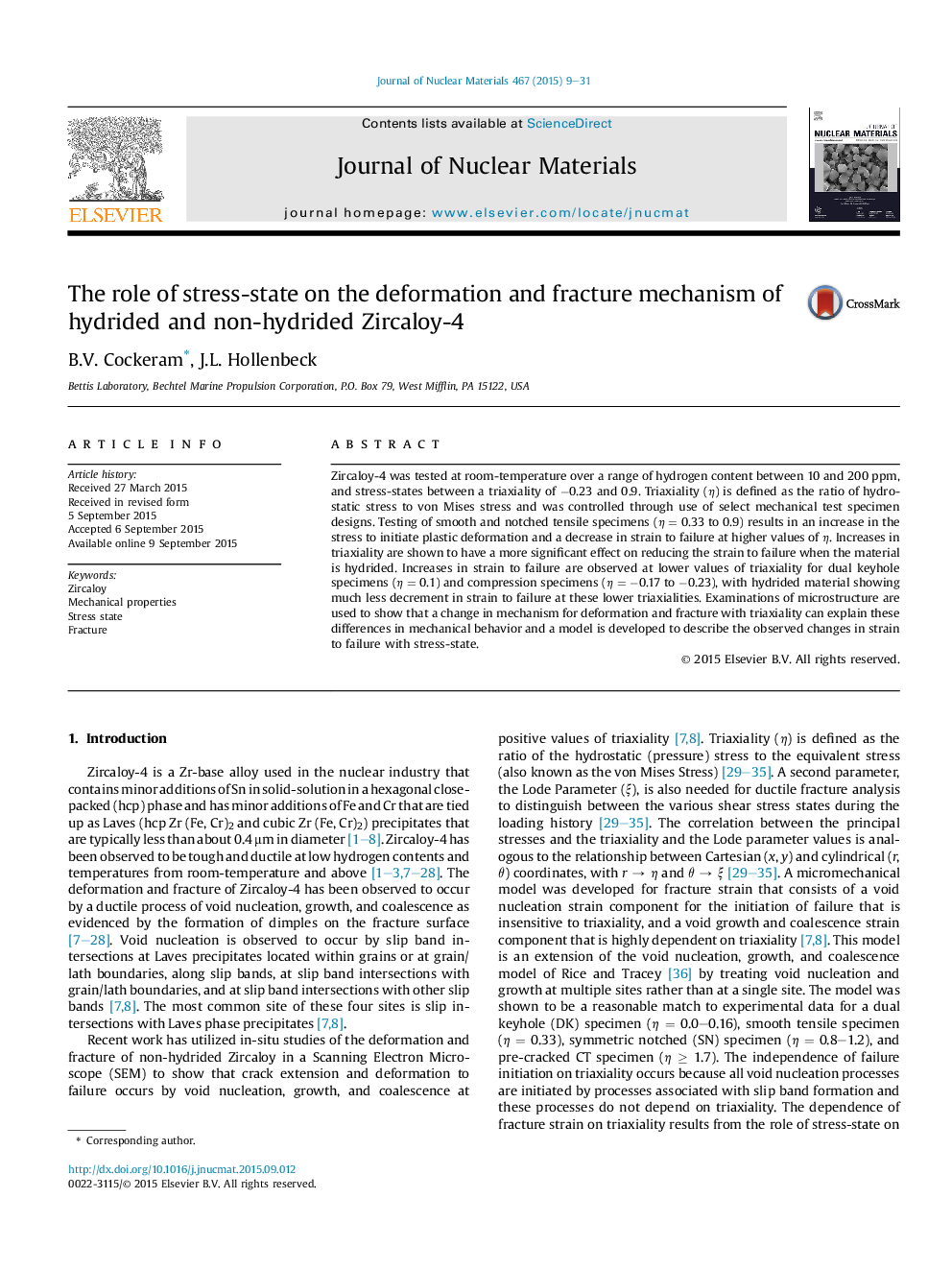| Article ID | Journal | Published Year | Pages | File Type |
|---|---|---|---|---|
| 1564857 | Journal of Nuclear Materials | 2015 | 23 Pages |
Abstract
Zircaloy-4 was tested at room-temperature over a range of hydrogen content between 10 and 200 ppm, and stress-states between a triaxiality of â0.23 and 0.9. Triaxiality (η) is defined as the ratio of hydrostatic stress to von Mises stress and was controlled through use of select mechanical test specimen designs. Testing of smooth and notched tensile specimens (η = 0.33 to 0.9) results in an increase in the stress to initiate plastic deformation and a decrease in strain to failure at higher values of η. Increases in triaxiality are shown to have a more significant effect on reducing the strain to failure when the material is hydrided. Increases in strain to failure are observed at lower values of triaxiality for dual keyhole specimens (η = 0.1) and compression specimens (η = â0.17 to â0.23), with hydrided material showing much less decrement in strain to failure at these lower triaxialities. Examinations of microstructure are used to show that a change in mechanism for deformation and fracture with triaxiality can explain these differences in mechanical behavior and a model is developed to describe the observed changes in strain to failure with stress-state.
Related Topics
Physical Sciences and Engineering
Energy
Nuclear Energy and Engineering
Authors
B.V. Cockeram, J.L. Hollenbeck,
